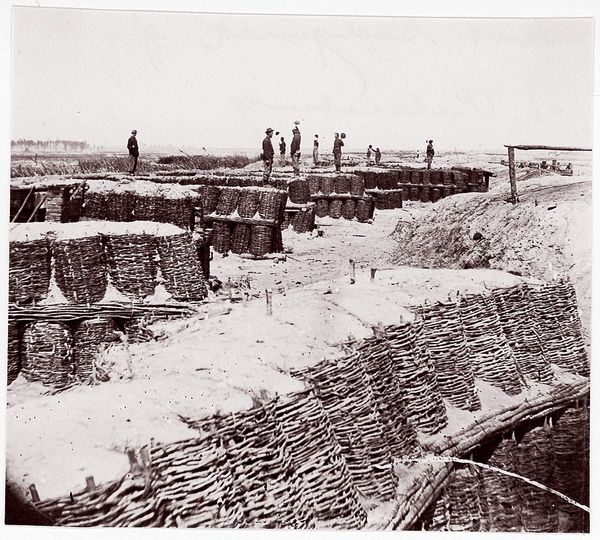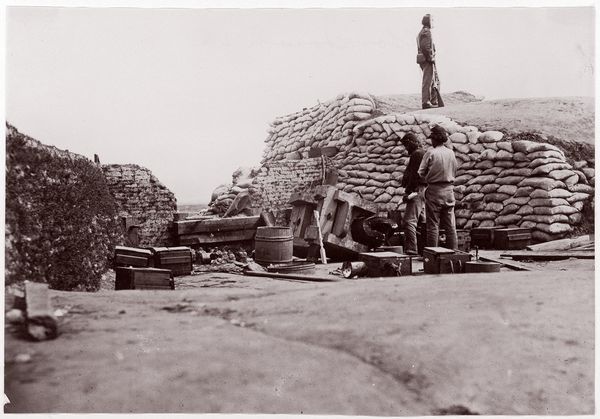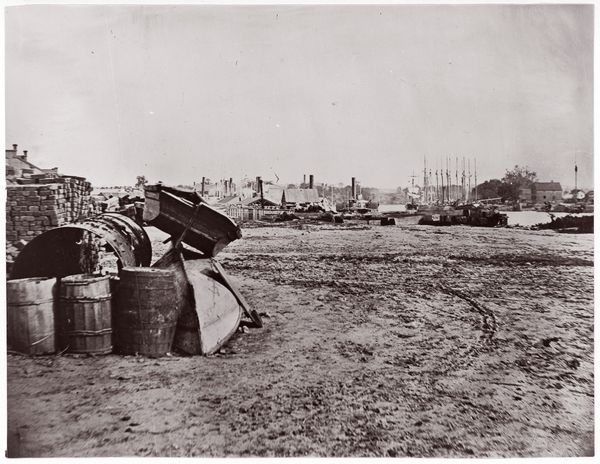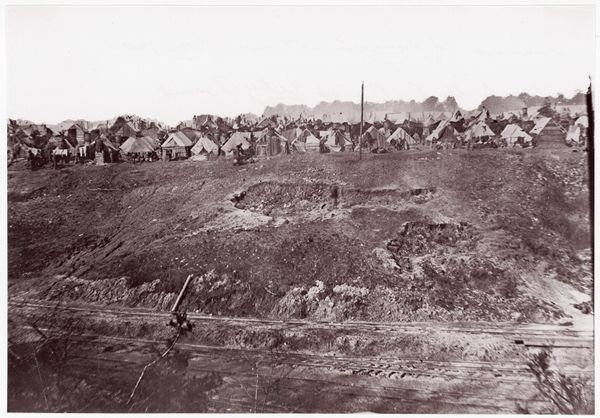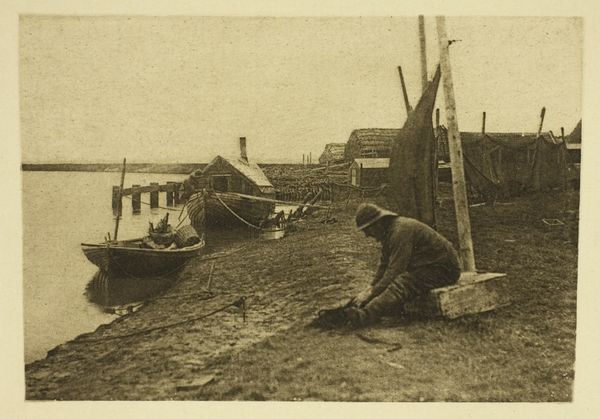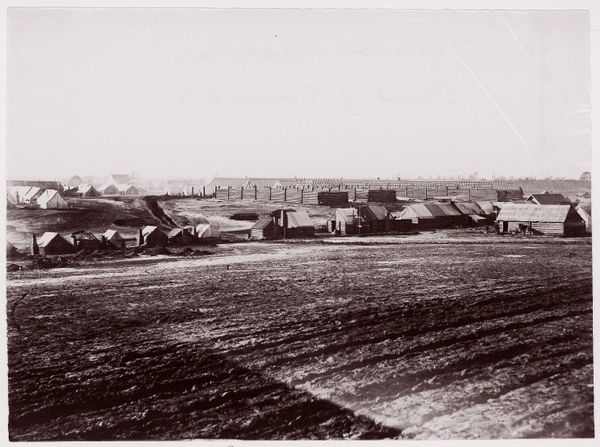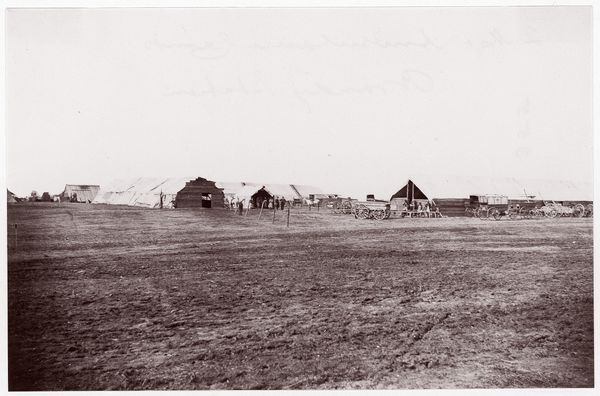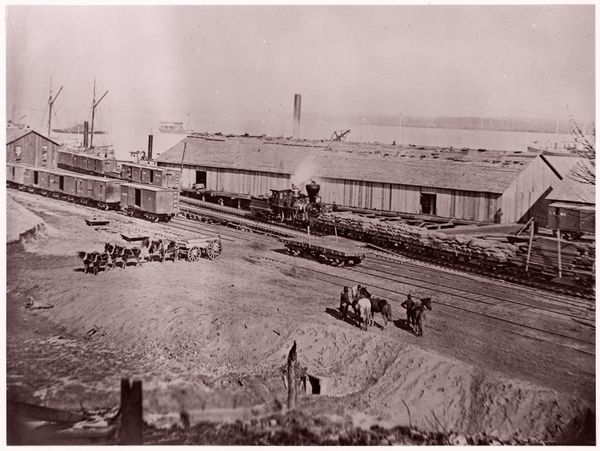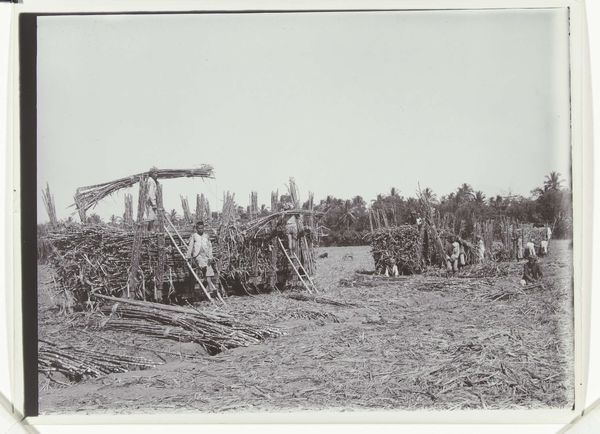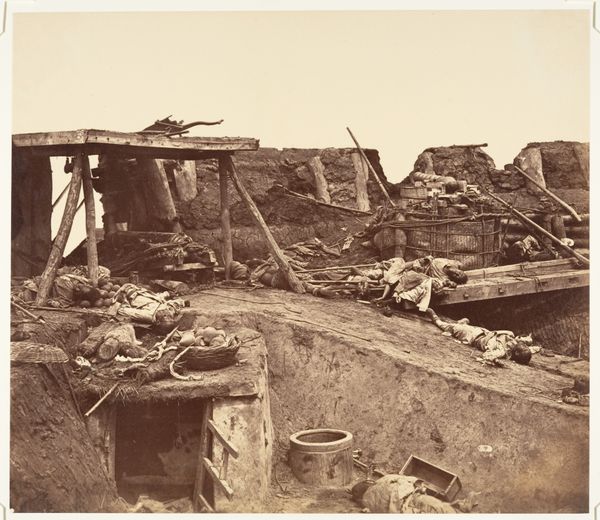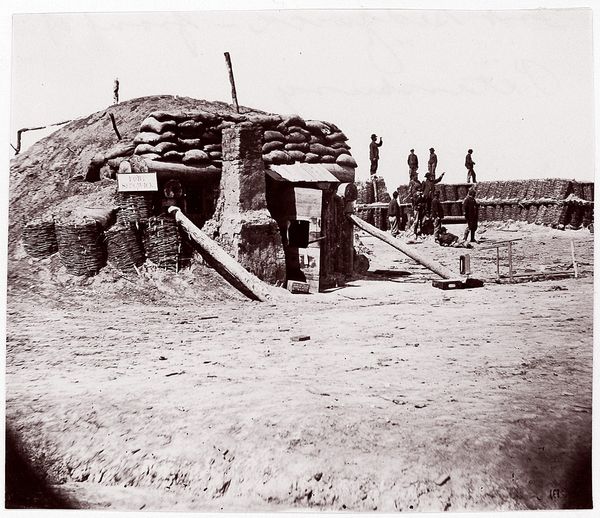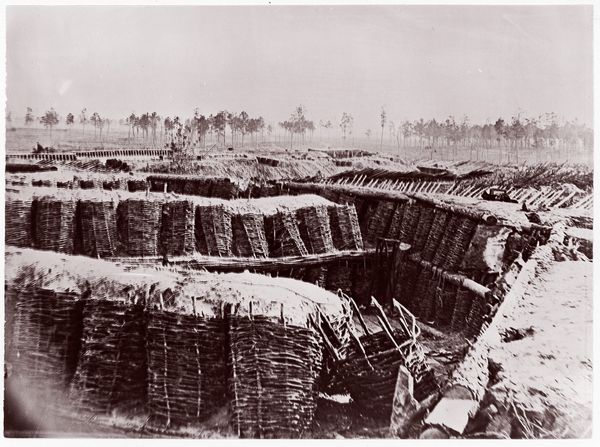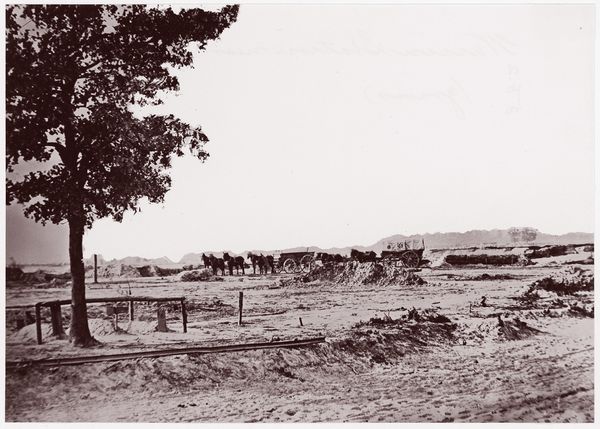
photography, gelatin-silver-print
#
black and white photography
#
war
#
landscape
#
photography
#
historical photography
#
gelatin-silver-print
#
monochrome photography
#
monochrome
Copyright: Public Domain
Curator: This is a gelatin-silver print entitled "Fort Price," a haunting image captured by Timothy O'Sullivan between 1861 and 1865. What's your immediate reaction to this stark landscape? Editor: It's bleak. Utterly bleak. There's a tangible sense of weariness, not just in the subject matter, but conveyed in the tones and textures. The crude structures seem to huddle against a vast, empty background. Curator: Precisely. O’Sullivan worked extensively during the American Civil War. His photographs are not just records of events; they shape our understanding of the conflict itself. Consider the image politics involved in depicting the war's impact. Editor: He's documenting not the battlefield glory, but the lived experience of warfare: the relentless drudgery, the makeshift existence. I can only imagine that existence shaped individual identity in complex ways, defining masculinity within a confined and violent context. This isn't a heroic narrative; it's something far more intimate and unsettling. The tents look almost permeable, like barriers to a space that could never be safe. Curator: Exactly. O'Sullivan documented a war often framed by notions of patriotism and valor. Yet, here we see a landscape scarred not only by physical conflict but also by the sheer toll it took on human life. This work invites reflection on how national narratives were constructed—and crucially, whose stories were omitted or downplayed in those narratives. What did it mean for O'Sullivan, as a white photographer, to depict a conflict centered on slavery and freedom? Editor: It's critical to analyze his positionality. He's a witness, yes, but a witness with his own ingrained biases and perspectives, his own visual vocabulary influenced by artistic and cultural currents. We have to unpack the context of 19th-century photography itself. What ideological frameworks determined what was photographable, and how it was presented to the public? These structures dictated access and, therefore, impacted the shaping of history itself. Curator: He forces a dialogue between aesthetics and violence. Editor: Indeed. By stripping away any romanticism and emphasizing the harsh reality, the photo becomes an indictment of war itself. It becomes an interrogation into what humanity, what empathy means in these zones. What are the social implications? Curator: It resonates beyond the historical context. Its lessons are painfully contemporary. Editor: Definitely a photograph that remains vital. It continues to ask questions of us, about power, representation, and the legacy of conflict.
Comments
No comments
Be the first to comment and join the conversation on the ultimate creative platform.

